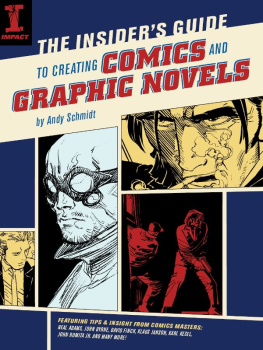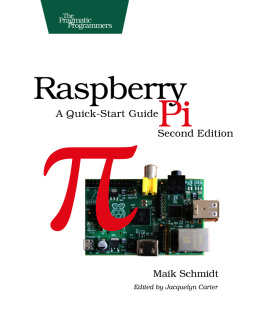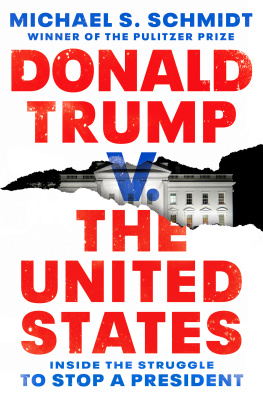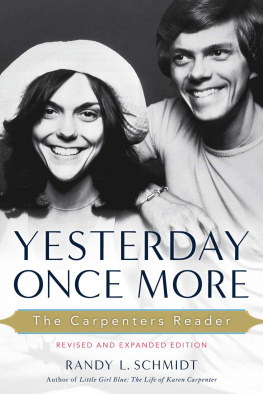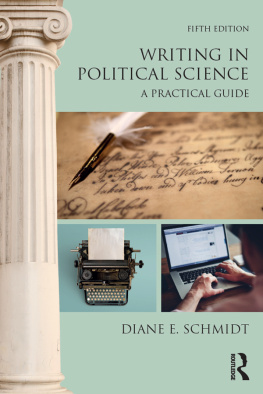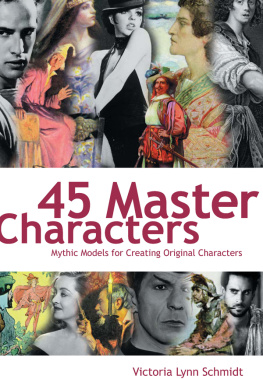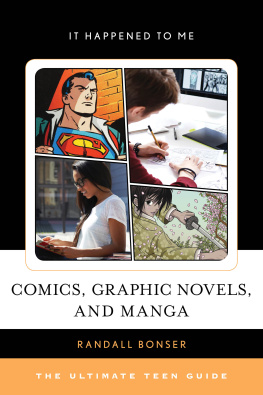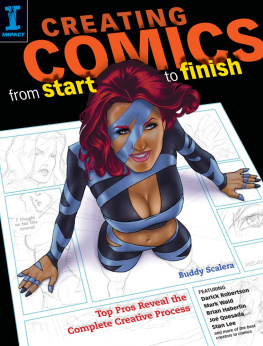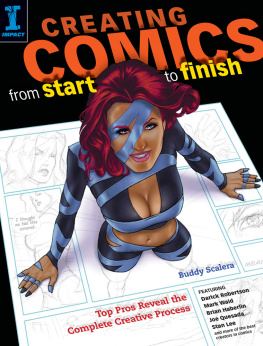the INSIDERS GUIDE TO CREATING COMICS and GRAPHIC NOVELS
ANDY SCHMIDT

www.impact-books.com
Dedication
To my mother and father. You taught me to dream.
To my brothers, Arne and Craig, who dreamt with me.
To my wife, Alixthe dream that came true.
The Insiders Guide to Creating Comics and Graphic Novels. Copyright 2009 by Andy Schmidt. Manufactured in China. All rights reserved. No part of this book may be reproduced in any form or by any electronic or mechanical means including information storage and retrieval systems without permission in writing from the publisher, except by a reviewer who may quote brief passages in a review. Published by IMPACT Books, an imprint of F+W Media, Inc., 4700 East Galbraith Road, Cincinnati, Ohio, 45236. (800) 289-0963. First Edition.

Other fine IMPACT Books are available from your local bookstore, art supply store, online supplier or visit our website at www.fwmedia.com.
13 12 11 10 09 5 4 3 2 1
DISTRIBUTED IN CANADA BY FRASER DIRECT
100 Armstrong Avenue
Georgetown, ON, Canada L7G 5S4
Tel: (905) 877-4411
DISTRIBUTED IN THE U.K. AND EUROPE BY DAVID & CHARLES
Brunel House, Newton Abbot, Devon, TQ12 4PU, England
Tel: (+44) 1626 323200, Fax: (+44) 1626 323319
Email: postmaster@davidandcharles.co.uk
DISTRIBUTED IN AUSTRALIA BY CAPRICORN LINK
P.O. Box 704, S. Windsor NSW, 2756 Australia
Tel: (02) 4577-3555
Library of Congress Cataloging in Publication Data
Schmidt, Andy,
The insiders guide to creating comics and graphic novels / Andy Schmidt.
p. cm.
ISBN 978-1-60061-022-6 (pbk. : alk. paper)
1. Comic books, strips, etc.--Authorship. 2. Comic books, strips, etc.--Technique. I. Title.
PN6710.S34 2009
Edited by Mona Michael
Designed by Wendy Dunning
Cover designed by Doug Mayfield
Production coordinated by Matt Wagner
Adobe Photoshop and Illustrator are either registered trademarks or trademarks of Adobe Systems Incorporated in the United States and/or other countries.
About the Author

Andy is a senior editor at IDW Publishing, overseeing G.I. Joe and Star Trek comics, among others. Andy is also the owner and operator of Comics Experience (www.comicsexperience.com), an education-based business dedicated to helping comic book writer and artist hopefuls fulfill their dreams. Most of his classes meet in New York or California. There is a distance-learning option for the writing course. Check out the website above to see if any of the courses or consulting are right for you. Andys freelance writing has been published by Marvel Comics, Th3rd World Studios, Markosia and BOOM! Studios.
Andy has been editing comics since 2002 when he started as an assistant editor under Tom Brevoort in the Marvel Heroes line of books for Marvel Entertainment. There, he lent his talents to everything from The Fantastic Four to The Avengers . He developed Madrox and later X-Factor with writer Peter David and artist Pablo Raimondi. Andy spearheaded the twenty-five-part, galaxy spanning space saga called Annihilation with a wealth of writers and artists. When he decided to leave Marvel, he was an integral part of the X-Men editorial team. His favorite projects there were Secret War , Madrox , Alias , Civil War , The New Avengers , Young Avengers , Ms. Marvel , Annihilation , The Pulse , Defenders , Union Jack , X-Factor and X-Men .
Before coming to comics, Andy designed and taught two college courses for Webster University in St. Louis on comic book storytelling. Much of what is contained in this book has been tried and tested out on his oh-so-unlucky guinea pigsahemstudents.
Andy is happy to have the good fortune to work in such a creative and fun industry, and to call many of his collaborators friends as well as colleagues. He lives in San Diego with his wife, Alix, and their son, Cale.
Acknowledgments
This book would not exist without the help and inspiration of Peter David, who invited me to write a guest spot in his book on writing for comics. Thanks for the opportunity, Peter. He introduced me to Pam Wissman at IMPACT Books, who massaged this project into existence and delivered it into the watchful care of editors Mona Michael and Kelly Messerly. Thanks also to Matt Bialy and Suzanne Lucas for working out all that contract mumbo jumbo.
Thanks to Carol Platt and Dan Buckley at Marvel Comics for allowing so much artwork to be used for this book, to Marco Chechetto for allowing the use of art from The Courier in the book and on the cover, and to John Romita Jr. for permission to use The Gray Area in the book and on the cover. John, youre the best in the business.
Thanks to all the contributors, especially those who wrote pieces for the book and gave interviews: Art Adams, Neal Adams, John Byrne, C.B. Cebulski, Chris Eliopoulos, David Finch, Gene Ha, Klaus Janson, Karl Kesel, Mike Perkins, Khoi Pham, Walt Simonson and Chris Soto-mayor. Thanks to Frank DAngelo for his assistance with the interviews.
Thank you to everyone who donated art files (without them, this book wouldnt look nearly so pretty): Gabriele DellOtto, Justin Ponsor, Laura Martin, Laura Villari, Mike Perkins, Pete Pantazis, June Chung, Brian Michael Bendis, Ed Brubaker, Tom DeFalco, Geoff Johns, Jos Villarrubia, Brian Reber, Chris Sotomayor, Jim Cheung, Bill Crabtree Frank DArmata and many, many more.
My deepest thanks to the people who taught me nearly everything I know about comics over the last few years, especially Tom Brevoort, Michael Higgins and Klaus Janson. This book and my own career would not have been possible without the three of you.
CONTENTS
How Comics Are Unique
Prose has the written word. Photography captures a moment in time. Radio brings us sound. Film breathes life into movement and brings it together with sound. And comicswhat do they do thats different?
Comics are the most powerful medium on the planet. Comics can have one authoras writer and artistone single mind and talent that creates the whole package. Only written prose shares this with comics. No other medium can so directly transmit the authors ideas and images into the mind of the receiver. Unlike the novel, comics transmit the images from the authors mind without translating them into descriptive phrases. In a novel, I have to describe the dark, wet, dreary forest with the sticky, muddy ground and hollow-eyed owls, but in comics I just draw exactly what my mind sees and show it directly to you, the reader. Even with photography, the photographer rarely makes up the landscape and so requires many outside elements to bring his photo to life. In television and filmforget about itactors, directors, writers, producers, editors and cinematographerseverybody gets his piece of the message.
The canvas size and shape can change in comics. Sure, with film, you can have widescreen or a square image, and with paintings and photography you can literally adjust your canvas size and shape, but with comics, the size and shape of the canvas can change from moment to moment. Once a film starts off in letterbox format, thats where it stays. The painters canvas doesnt change before your eyes. Once its done, its set in stone. The comic panel (sometimes called the frame or window ) can change from page to pagefrom panel to panel, in fact.
Unlike in film and television, there is no special effects budget. Your budget cap in comics is the imagination. Blowing up a planet costs a lot of money to put on film effectively, but in comics, its the cost of the art board, a pencil, and the time and effort. A summer blockbuster in a comic costs the same as a romantic comedy or noir detective story or Greek tragedy. The playing field is equal. We all work with twenty-two blank pages and our own wits.
Next page
